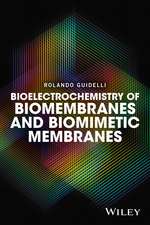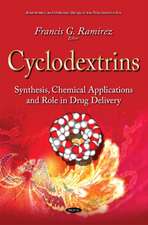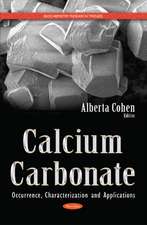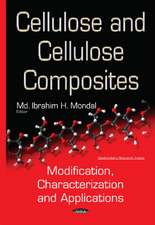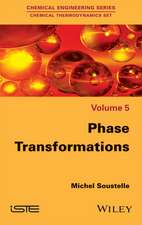Vitamin C: The Mysterious Redox-System A Trigger of Life?
Autor S. Nobile, J.H. Woodhillen Limba Engleză Paperback – mai 2012
Preț: 362.88 lei
Preț vechi: 381.98 lei
-5% Nou
Puncte Express: 544
Preț estimativ în valută:
69.44€ • 74.25$ • 57.90£
69.44€ • 74.25$ • 57.90£
Carte tipărită la comandă
Livrare economică 18 aprilie-02 mai
Preluare comenzi: 021 569.72.76
Specificații
ISBN-13: 9789401198417
ISBN-10: 9401198411
Pagini: 188
Ilustrații: 180 p. 1 illus.
Dimensiuni: 155 x 235 x 10 mm
Greutate: 0.27 kg
Ediția:1981
Editura: SPRINGER NETHERLANDS
Colecția Springer
Locul publicării:Dordrecht, Netherlands
ISBN-10: 9401198411
Pagini: 188
Ilustrații: 180 p. 1 illus.
Dimensiuni: 155 x 235 x 10 mm
Greutate: 0.27 kg
Ediția:1981
Editura: SPRINGER NETHERLANDS
Colecția Springer
Locul publicării:Dordrecht, Netherlands
Public țintă
ResearchCuprins
1 Interactions, interdependence and interrelationships of vitamin C in human nutrition and metabolism.- 2 How was vitamin C discovered?.- 2.1 Scurvy-historical background.- 2.2 Isolation of the antiscorbutic factor.- 2.3 Chemical and structural formulae and synthesis of vitamin C.- 2.4 Why cannot the human organism make its own vitamin C?.- 2.5 Naming names - vitamin C versus ascorbic acid.- 3 What is vitamin C?.- 3.1 Structure and physicochemical properties.- 3.2 Biochemical reactivity of the vitamin C system.- 4 How is vitamin C determined?.- 4.1 Assay of vitamin C in foods.- 4.2 Assay of vitamin C in human tissues and body fluids.- 5 Where is vitamin C found? - vitamin C in foods.- 5.1 Vitamin C in fruit and vegetables.- 5.2 Vitamin C in foods of animal origin.- 5.3 Standardization, restoration, enrichment or fortification of foods with L-ascorbic acid.- 5.4 Use of L-ascorbic acid as an antioxidant in foods.- 5.5 Assessment of food intake for vitamin C.- 5.6 Why food in preference to ascorbic acid tablets or crystalline ascorbic acid?.- 6 Vitamin C in the human body.- 6.1 Where does it go?.- 6.2 How does vitamin C function?.- 6.3 What does vitamin C do?.- 7 Case studies of scurvy and hypovitaminosis C in Australia.- 7.1 Mental performance of old men in a geriatric hospital.- 7.2 Mental performance of old men receiving meals-on-wheels.- 7.3 Precipitation of scurvy in an old woman.- 7.4 Aboriginal families and scurvy baby.- 7.5 Aboriginal women of childbearing age.- 7.6 Australian children from socioeconomic stress groups.- 7.7 Adult Australians in varying degrees of health.- 8 How much vitamin C do we humans need? - dietary allowances.- 8.1 Scurvy prevention versus tissue saturation - the great debate.- 8.2 Dietary allowances for vitamin C based on scurvy prevention.-8.3 Dietary allowances for vitamin C based on the concept of approaching tissue saturation.- 8.4 The yo-yo of dietary allowances for vitamin C.- 9 Assessment of vitamin C status.- 9.1 Clinical, dietary and biochemical assessment.- 9.2 Correlations between clinical, dietary and biochemical vitamin C status in adults.- 9.3 Sex and age difference - intake and plasma levels of vitamin C.- 10 Vitamin C, modern lifestyle and hazards.- 10.1 Vitamin C in smoking and heavy drinking.- 10.2 Vitamin C and drugs.- 10.3 Vitamin C and climate.- 11 Dietary recommendations for the healthy man and woman of the 1980s.- 12 Ascorbic acid as a therapeutic agent - some controversial issues.- 12.1 Ascorbic acid and the common cold.- 12.2 Ascorbic acid and cancer.- 12.3 Ascorbic acid and atherosclerosis.- 12.4 Ascorbic acid and other diseases.- 12.5 Ascorbic acid and surgical trauma.- 12.6 Megadoses of ascorbic acid.- 13 Vitamin C and future research.- 14 Appendices.- 14.1 Summary of the fluorimetric determination of vitamin C in blood plasma.- 14.2 Examples of daily menus providing adequate vitamin C.- 15 References.- 15.1 Special references to vitamin C and the common cold.- 16 Abbreviations, Symbols and Glossary.- 16.1 Abbreviations.- 16.2 Symbols.- 16.3 Glossary.




